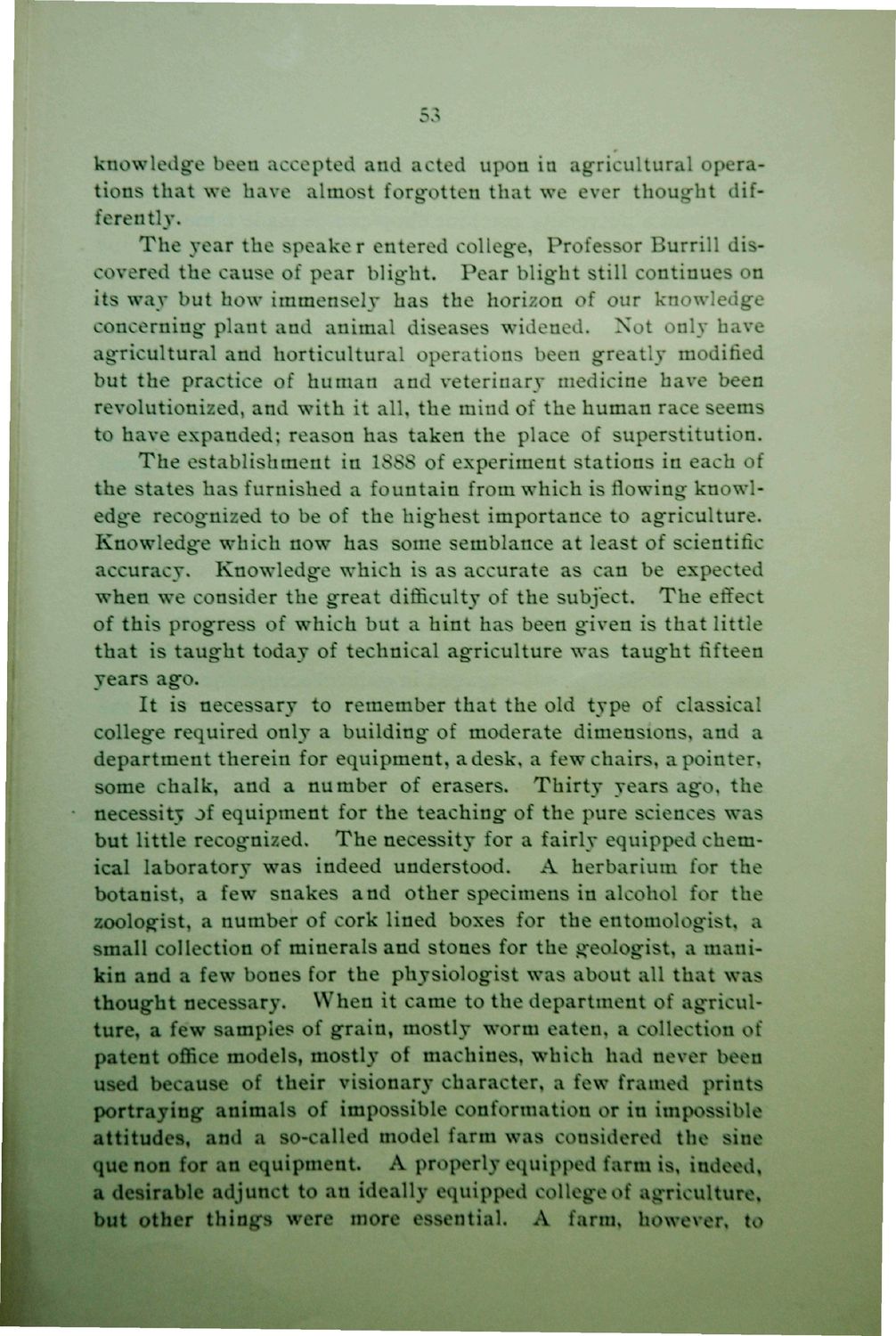| |
| |
Caption: Dedication - Ag Building
This is a reduced-resolution page image for fast online browsing.

EXTRACTED TEXT FROM PAGE:
53 knowledge been accepted and acted upon in agricultural operations that we have almost forgotten that we ever thought differently. The year the speaker entered college, Professor Burrill discovered the cause of pear blight. Pear blight still continues on its way but how immensely has the horizon of our knowledge concerning plant and animal diseases widened. Not only have agricultural and horticultural operations been greatly modified but the practice of human and veterinary medicine have been revolutionizedi and with it all, the mind of the human race seems to have expanded; reason has taken the place of superstitution. T h e establishment in 1888 of experiment stations in each of the states has furnished a fountain from which is flowing knowledge recognized to be of the highest importance to agriculture. Knowledge which now has some semblance at least of scientific accuracy. Knowledge which is as accurate as can be expected when we consider the great difficulty of the subject. The effect of this progress of which but a hint has been given is that little that is taught today of technical agriculture was taught fifteen years ago. I t is necessary to remember that the old type of classical college required only a building of moderate dimensions, and a department therein for equipment, a desk, a few chairs, a pointer, some chalk, and a number of erasers* Thirty years ago, the necessity of equipment for the teaching of the pure sciences was but little recognized* The necessity for a fairly equipped chemical laboratory was indeed understood. A herbarium for the botanist, a few snakes and other specimens in alcohol for the zoologist, a number of cork lined boxes for the entomologist, a small collection of minerals and stones for the geologist, a manikin and a few bones for the physiologist was about all that was thought necessary. When it came to the department of agriculture, a few samples of grain, mostly worm eaten, a collection of patent office models, mostly of machines, which had never been used because of their visionary character, a few framed prints portraying animals of impossible conformation or in impossible attitudes, and a so-called model farm was considered the sine que non for an equipment A properly equipped farm is, indeed, a desirable adjunct to an ideally equipped college of agriculture, but other things were more essential. A farm, however, to
| |